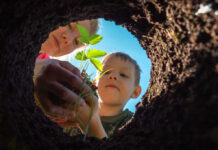
Seniors who embrace both physical fitness and body acceptance experience greater overall wellness, independence, and quality of life well into their golden years.
At a Glance
- Regular physical activity for seniors reduces chronic illness risk, improves mental wellbeing, and enhances cognitive function
- Lifelong learning and creative activities are crucial components of senior wellness, promoting cognitive health and personal fulfillment
- Mindfulness practices including yoga, meditation and journaling significantly improve emotional and mental wellness in older adults
- Active aging emphasizes older adults remaining engaged participants in their communities while making their own life choices
The Dual Foundation of Senior Wellness
For adults over 60, wellness requires a balanced approach focusing on both physical fitness and body acceptance. This dual focus acknowledges the importance of maintaining physical well-being while developing a healthy relationship with one’s changing body. Research shows that promoting wellness activities for seniors is essential for enhancing quality of life, maintaining independence, and reducing chronic illnesses. These activities not only strengthen the body but also foster appreciation for what the body can still accomplish, regardless of age-related changes.
Physical activities recommended for seniors include walking, yoga, swimming, and dance classes. These options provide cardiovascular benefits, improve strength and flexibility, and enhance balance—all critical factors for preventing falls and maintaining mobility. Beyond physical benefits, these activities create opportunities for social interaction, which is equally important for holistic wellness. Regular exercise reduces stress, anxiety, and depression while enhancing cognitive functions and mood regulation, making it a cornerstone of senior wellness programs.
Embracing Active Aging
Active aging emphasizes the importance of older adults remaining engaged participants in their communities and making their own life choices. This concept reinforces that aging well involves more than physical health—it encompasses social connections, personal autonomy, and continued purpose. Active Aging Week, an international celebration held annually in the last week of September, promotes these positive aspects of aging through community events and educational opportunities.
The benefits of active aging extend beyond physical health to include extended longevity, improved quality of life, disease prevention, and a renewed sense of purpose. Wellderly Week, another celebration of senior wellness, emphasizes aging well by addressing physical mobility, financial independence, and cultivating joy through community events like gardening lessons, painting workshops, fitness classes, book clubs, and wellness fairs. These initiatives help seniors embrace the aging process rather than resist it.
Mental Fitness and Lifelong Learning
Mental stimulation through puzzles, games, reading, and creative hobbies is crucial for cognitive function and emotional well-being in seniors. Lifelong learning, in particular, plays a vital role in senior health and happiness, especially in senior living communities. Educational pursuits encourage creativity and personal fulfillment, allowing older adults to explore new passions and maintain a growth mindset that contributes to positive aging.
Social engagement is naturally fostered through group learning activities, reducing isolation and promoting community building. Technology has expanded these opportunities, offering digital literacy training and access to online resources that connect seniors to global learning communities. Structured programs like the Mental Fitness Program for Positive Aging provide frameworks for enhancing well-being, with focus on preventive measures and positive psychology principles rather than remediation of deficits.
Holistic Approaches to Body Acceptance
Body acceptance for seniors involves recognizing and celebrating the body’s strengths and capabilities, leading to heightened self-awareness, personal responsibility, and gratitude. Ryff’s model of successful aging identifies six dimensions critical to this process: self-acceptance, positive relations, autonomy, environmental mastery, purpose in life, and personal growth. These dimensions form the foundation of comprehensive wellness programs that help seniors develop healthy relationships with their changing bodies.
Mindfulness practices like yoga, meditation, and journaling improve emotional and mental wellness by helping seniors connect with their bodies in supportive, non-judgmental ways. These practices build awareness of physical sensations, thoughts, and emotions related to the body, fostering acceptance rather than resistance. By making intentional wellness decisions that honor both physical needs and emotional health, seniors can nurture a more profound connection with their bodies, creating the foundation for a healthier, more engaged life throughout their later years.

















